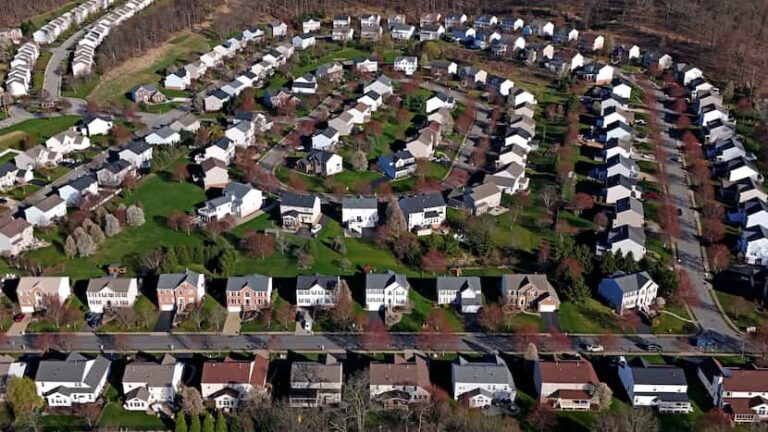Dallas-Fort Worth home prices bucked the national market trend, rising 3.5% in February from a year ago.
That’s below the national average year-over-year increase of 6.4%, according to the latest S&P CoreLogic Case-Shiller Home Price NSA Index, but it’s the biggest annual gain in the D-FW area since January 2023, according to preliminary data from the closely watched housing index.
Brian D. Luke, head of commodities, real and digital assets at S&P Dow Jones Indices, said the 6.4% increase nationwide was the fastest annual rate of growth since November 2022, as U.S. home prices are at or near all-time highs.
Dallas continues to report one of the lowest annual price increases among the 20 major metro areas tracked by Case-Shiller, with only Denver (2.7%) and Portland (2.2%) reporting lower growth rates.
However, D-FW saw the largest home price growth in the country for 2021 and most of 2022, posting price increases of more than 10% year-over-year.
The increase in February’s report was primarily driven by increases in the Northeast and West.
San Diego saw its home sales increase 11.4% year over year in February, the highest among the 20 metropolitan areas, followed by Chicago and Detroit, both with increases of 8.9%. The Case-Shiller index is a three-month moving average that compares the fluctuations in sales prices of a particular property over time.
“This is the second time since prices peaked in 2022 that home prices have risen in the face of economic uncertainty,” Luke said. “The first decline occurred after the start of the Federal Reserve’s rate hiking cycle. The second decline occurred after average mortgage rates peaked last October. The possibility of a Fed rate cut and enthusiasm for lower mortgage rates appear to have supported buyer behavior.”
On a month-to-month basis, D-FW area home prices rose slightly in February, 0.6% higher than January, the first month-over-month increase since July 2023, according to historical price data that is not seasonally adjusted.
Eighteen of the 20 cities tracked by Case-Shiller reported monthly increases, with Tampa reporting a 0.3% decrease and Cleveland unchanged.
“Like many economic indicators, the road to normalization for the housing market remains rough,” said Thelma Hepp, chief economist at CoreLogic. “Home sales and inventory have improved from last year’s troughs, but rising mortgage rates remain a hurdle to homebuying, with many potential buyers continuing to take a wait-and-see approach. Still, given the ongoing imbalance between buyers and sellers, home price growth has held steady, with monthly gains rising despite slowing annual acceleration reflecting a comparison with a particularly strong gain in spring 2023.”
Prices are rising in Dallas as well, but Hepp added that the annual increases are “relatively modest” given the “significant increase in new home construction.”
For those looking to buy in D-FW during this season’s sales, there could be some issues.
North Texas home sales were down 7% in March compared to a year ago, according to data from the Texas Real Estate Research Center at Texas A&M University, North Texas Real Estate Information Services and the Metro Texas Association of Realtors. The median home price in North Texas was $395,000 in March, up 1.3% from a year ago.
The Federal Reserve is also meeting this week to discuss how to proceed after a disappointing interest rate and inflation report at the start of the year threatened much-needed rate cuts.
Mortgage interest rates exceeded 7% for the first time in April this year and have continued to rise. In the week ending April 25, the average interest rate for a 30-year mortgage was 7.17%.

